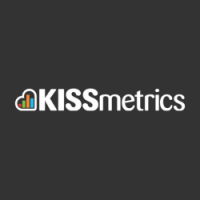UTM Editor – efficient tagging of campaign links
You can evaluate the effectiveness of an advertising campaign as a whole. But in order to optimize it on an ongoing basis and get the most out of its budget, you need detailed data on the effectiveness of individual channels, creations, and locations.
This is what UTM tags (or UTM codes) are for – parameters added to the landing page URL that don’t affect its display but allow the analytical package (e.g. Google Analytics) to record additional information about traffic sources.
https://www.mywebsite.com/?utm_campaign=blackfriday2020&utm_source=yahoo&utm_medium=billboard3
Types of UTM tags
There are five basic UTM tags, of which the use the first three is mandatory. In other words – the tagged URL should contain at least the first three tags – the use of the other two (and any others) is optional.
utm_campaign
The first of the mandatory tags, used to mark the entire campaign. With its help, you can group links from various sites and analyze together all the activities that make up the campaign.
utm_campaign=spring-sale2020
utm_campaign=free-samples
utm_campaign=rebranding2020
utm_source
The second mandatory tag contains information about the source of the traffic – i.e. the channel from which the traffic is derived. It can be the name of a portal, social networking site, advertising network, etc.
utm_source=facebook
utm_source=blog
utm_source=newsletter
utm_medium
The last of the mandatory tags is used to provide information about the advertising medium. Here you can mark a specific banner to later see its performance in statistics against other creatives.
utm_medium=rectangle7
utm_medium=textlink
utm_medium=button
utm_content
An optional tag that can be used to indicate specific content that has attracted the user to the destination page. This can be the content of the banner, button or article in which the ad was placed. Example: in many blog posts you have the same banner or button – and you want to know which article brings you the most visits.
utm_content=all+for+half+price
utm_content=how+to+choose+a+bra
utm_content=10+ideas+for+holidays
utm_term
Another optional tag that applies to CPC activities to identify specific key words or phrases.
utm_term=business+magazines
utm_term=running+shoes
utm_term=web+hosting
Building URLs with UTM tags
The most popular tool for preparing tagged URLs is … Excel (or any other spreadsheet). Destination URL landing page in the first column, individual UTM tags in the next ones and in the last one the formula combining everything into a whole, e.g. =CONCATENATE(A1;"?";B1;"&";C1;"&";D1).
Fortunately, there are more convenient solutions – for example, the free UTM Editor.
UTM Editor functions
UTM Editor is a simple form that “sticks” entered UTM parameters to a given landing page URL. It works very quickly and remembers entered data, displaying it on our next visit.
UTM Editor can facilitate your work with UTM tags thanks to two convenient functions:
Tips
Below the form fields corresponding to individual UTM tags there are sample (often used) values of given parameters. Just click on the selected example to insert it as the field value. In this way, you can instantly generated the entire tagged URL by clicking.
Generating multiple URLs at once
If you paste multiple URLs into the landing page URL field – one per line – multiple tagged URLs will be generated. The same parameters will be added on each line.
But if you want one of the parameters to be different in each of the URLs generated – e.g. a number – use the placeholder “%X%” – a line number will be inserted in its place. This way you will get something like this:
https://www.mywebsite.com/?utm_campaign=blackfriday2020&utm_source=yahoo&utm_medium=billboard1
https://www.mywebsite.com/?utm_campaign=blackfriday2020&utm_source=yahoo&utm_medium=billboard2
https://www.mywebsite.com/?utm_campaign=blackfriday2020&utm_source=yahoo&utm_medium=billboard3
https://www.mywebsite.com/?utm_campaign=blackfriday2020&utm_source=yahoo&utm_medium=billboard4

URL shortening
The tagged URLs are very long. Basic tags alone are at least 40 characters – and most often closer to 70. If the address of the landing page is also long, then quite a colossus can come out.
https://www.mywebsite.com/campaign-landing-page/?utm_campaign=summer-sale2020&utm_source=instagram&utm_medium=post&utm_term=running+shoes+sale
Fortunately, tagged URLs can be shortened – using services such as bit.ly or rocketlink.io. Currently you have to do it manually, but in the near future UTM Editor will be integrated with bit.ly – and shortened links will be generated with one click!
Use utmeditor.com/ to generate multiple URLs with UTM parameters at once – via @supermonitoring
Summary
UTM tags are undoubtedly indispensable in internet marketing – they are useful for evaluation and optimization of activities and help in attribution of conversions – i.e. assigning “merits” of a given event (e.g. sales, registration) to the correct channel, medium etc.
UTM Editor allows you to quickly and efficiently generate tagged links to your campaign – both individually and serially.







